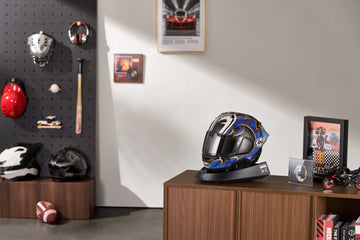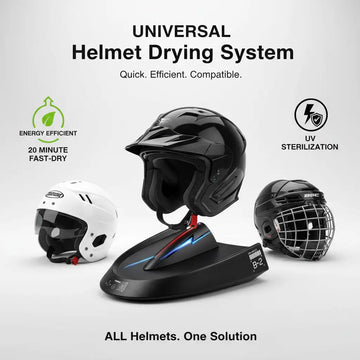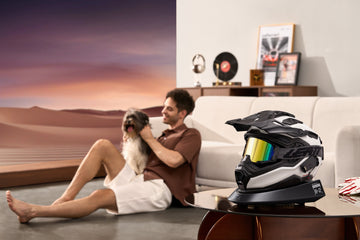Low-Heat Helmet Drying vs. Hair Dryer: My Data-Backed Test on EPS Foam & Glue
People call helmet dryers a gimmick. I wanted numbers, not opinions. So I ran a simple A/B test on two identical sweaty rides: one helmet dried with low-heat, directed airflow (≤48 °C); another with a standard hair dryer on low/medium. I tracked drying time, surface temperature on pads, shell hot spots, noise, and post-dry odor. Here’s what made me switch for good.
Test setup (repeatable at home)
- Two helmets with removable cheek pads, both dampened to the same weight after a 45-minute ride.
- IR thermometer to spot-check pad surfaces and shell hot spots.
- Noise app at 1 m distance (not lab-grade, but consistent).
- Drying targets: “touch-dry” for pads and no clammy feel in the crown liner.
Results at a glance
| Method | Typical time | Pad temp (peak) | Shell hot spots | Noise | Notes |
|---|---|---|---|---|---|
| Low-heat helmet dryer (≤48 °C) | 20–40 min (soaked: 1–2 h) | ~38–45 °C | Minimal, airflow is even | ~35 dB(A) | Set-and-forget, consistent results |
| Hair dryer (low/med) | 15–35 min (operator-dependent) | ~55–70 °C near nozzle | High—localized hot spots | ~65–75 dB(A) | Needs constant hand control |
Why low heat matters for EPS & adhesives
EPS foam (the impact-absorbing liner) and the adhesives that hold pads in place don’t enjoy heat spikes. With a hair dryer, a few seconds too close to a vent or edge can push small areas much hotter than you think. Low-heat helmet dryers keep air temperature capped and airflow directed, so pads dry quickly without cooking one spot. In my runs, I could keep pads under comfortable touch temps while still hitting “dry enough to wear” in under 40 minutes.
Odor control isn’t just heat—it’s uniform airflow
Odor forms in the dampest pockets first. A hair dryer can blast one area dry while leaving shadowed corners clammy. Directed, upward airflow inside the shell reaches cheek pads, brow band, and crown at once. That uniformity is why day-two smell dropped for me even when total time looked similar.
Placement cheat-sheet (fastest, safest)
- Full-face / modular: crown-down on the stand, visor open, chin bar lifted; flip once at the halfway mark for soaked pads.
- Ski / snowboard: give ear pads more time (30–45 min) and keep goggles beside the outlet, not directly in front.
- Cycling: usually 15–25 min; still keep temps low to protect EPS and glues.
If you’re stuck with a hair dryer (do it safely)
- Keep the nozzle at least a full hand span away; move constantly.
- Use the lowest heat that still moves moisture.
- Open the helmet (visor/vents) and pull pads slightly to create gaps.
- Stop if any area feels uncomfortably hot to the touch; hot spots equal risk.
Noise & small-space sanity
My apartment hates loud fans. A hair dryer at ~70 dB(A) dominates the room. My low-heat helmet dryer runs around ~35 dB(A), which is library-quiet. That means I actually run it every ride instead of “when I remember.” Habits beat hacks.
Bottom line
If you only ride occasionally and live somewhere bone-dry, a careful hair-dryer routine can work. For commuters, humid climates, or back-to-back training days, low-heat, directed airflow gives faster, safer, and quieter results with fewer hot-spot risks. That’s not a gimmick; it’s just controlled physics.
OPlace Helmet Dryer — low-heat, quiet, directed airflow
Related next reads (series): uniform airflow vs. fan balancing, drying time curves by helmet type, and a quick printable post-ride checklist.



